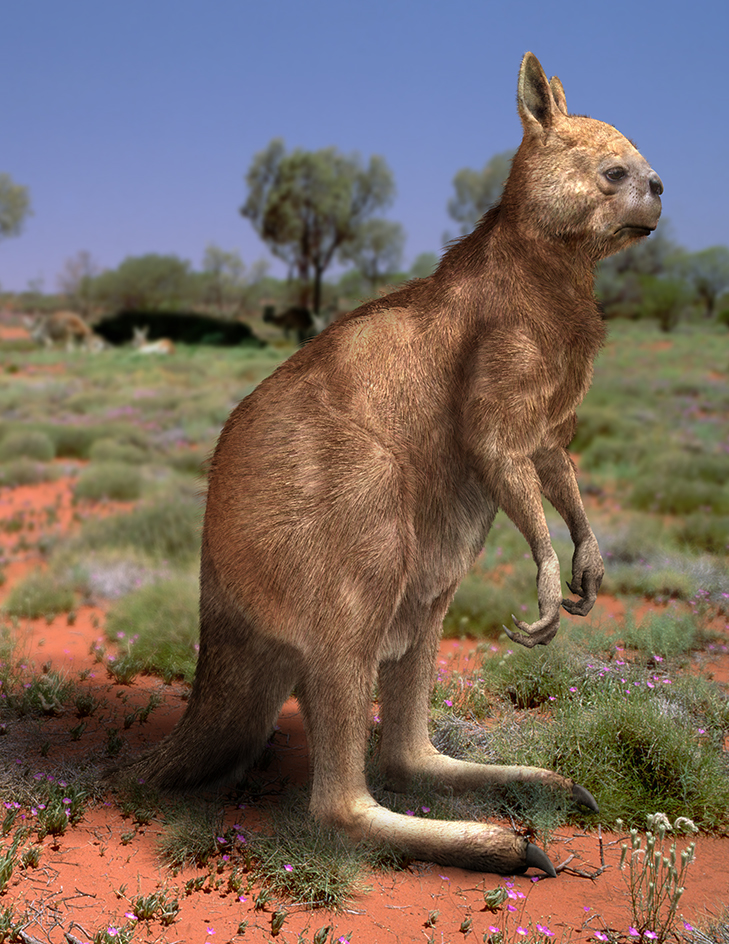Giant kangaroo was the largest kangaroo that ever lived. The giant kangaroo lived in what is now Australia. It first appeared 1 million to 2 million years ago. It became extinct within the last 100,000 years.

The giant kangaroo grew to about 6 1/2 feet (2 meters) tall. Adults could weigh as much as 500 pounds (230 kilograms).
The giant kangaroo belonged to a group of kangaroos with short faces, forward-facing eyes, sturdy skeletons, and a single toe on each hind foot. It had strong jaw muscles, a sturdy lower jaw, and oversized molars (back teeth). Its jaw and teeth enabled it to eat tough shrubs, such as saltbush.
The giant kangaroo lived throughout Australia’s interior. It mostly inhabited dry, relatively harsh areas. It is likely to have been eaten by such large predators (hunting animals) as the marsupial lion.
The giant kangaroo was a marsupial—that is, a mammal that gives birth to tiny, undeveloped young. After birth, these young make their way to the mother’s pouch, where they feed on milk.
The giant kangaroo became extinct within the last 100,000 years, as did many other large animals in Australia. Scientists do not agree on the causes of these extinctions. Some argue that humans were responsible through hunting, habitat destruction, or both. Others maintain that most species were gone before humans arrived in Australia, probably more than 65,000 years ago. They argue that the extinctions may be related to long-term climate change. It is likely that a number of factors played a role in the extinctions.
